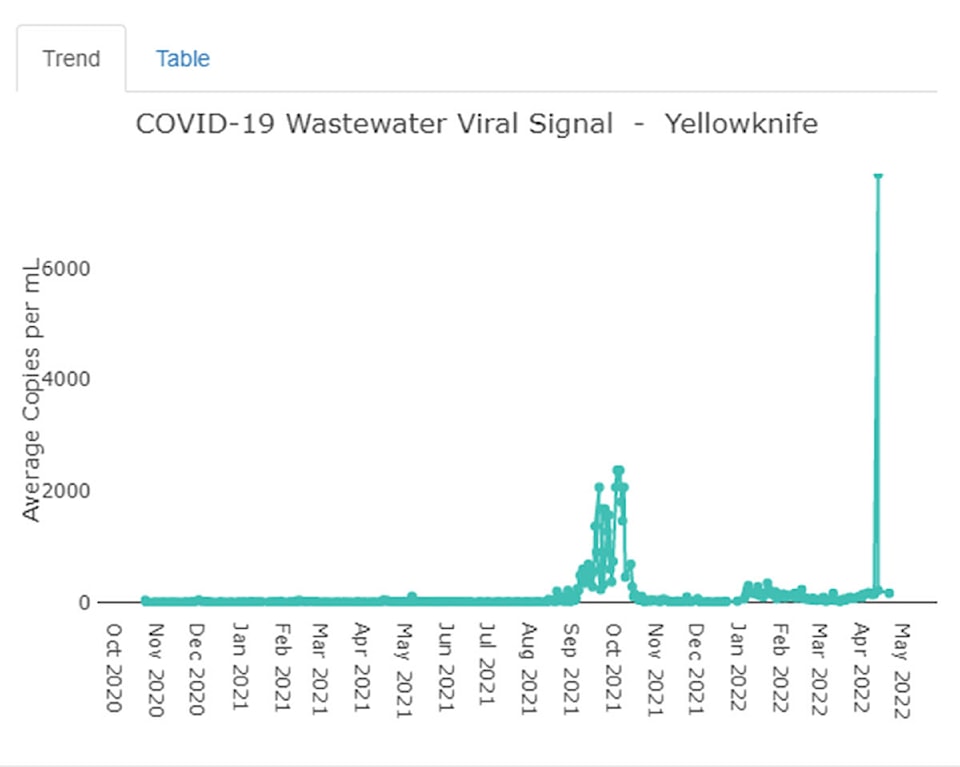Yellowknife hasn’t seen a rise in severe Covid-19 cases in the last three weeks despite a spike in the viral load in the city’s wastewater, according to the NWT’s Department of Health and Social Services.
The spike in viral load on April 11 was recorded on the GNWT’s Covid-19 dashboard, which tracks various virus-related trends. A graph from that dashboard shows average copies of the Covid virus per millilitre of wastewater, which is the unit used to measure viral load, skyrocketing from 138.9 on April 8 to about 7,700 on April 11.
Previously, the highest viral load detected in Yellowknife’s wastewater was 2,373.1 copies per millilitre in early October. Since then, levels have generally stayed under 350 copies per millilitre.
Department of Health and Social Services spokesperson Jeremy Bird said this increase was expected to happen in April due to the latest Covid variant. However, “In the past three weeks we have not seen an associated rise in severe hospitalizations, which have been relatively stable since the lifting of the territorial gathering order on March 1. The OCPHO (Office of the Chief Public Health Officer) will continue to monitor the situation, and if there is reason for concern, they will issue a public notice.”
He said the “predominant strain” in the water was the Omicron BA.2 variant, a more infectious but not more severe strain of the Omicron variant that was first detected in the territory in March.
Bird said that “currently, there is not enough information,” to decide whether to take additional corrective measures.
“We actively monitor the results from the next few samples before determining what a spike could indicate. Again, if there is reason for concern, the Office of the Chief Public Health Officer will issue a public notice.”
There has been one new Covid-related death in the NWT since the public health emergency was lifted, bringing the total to 22.
*
